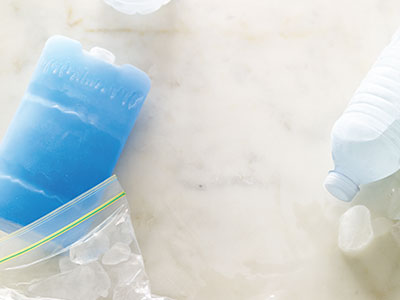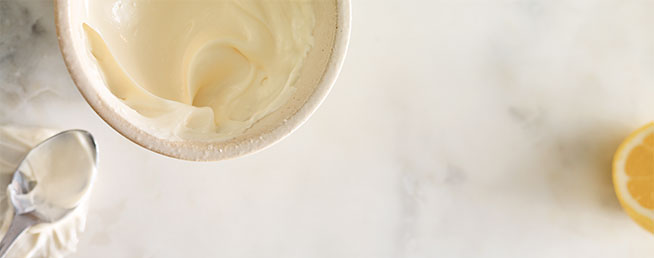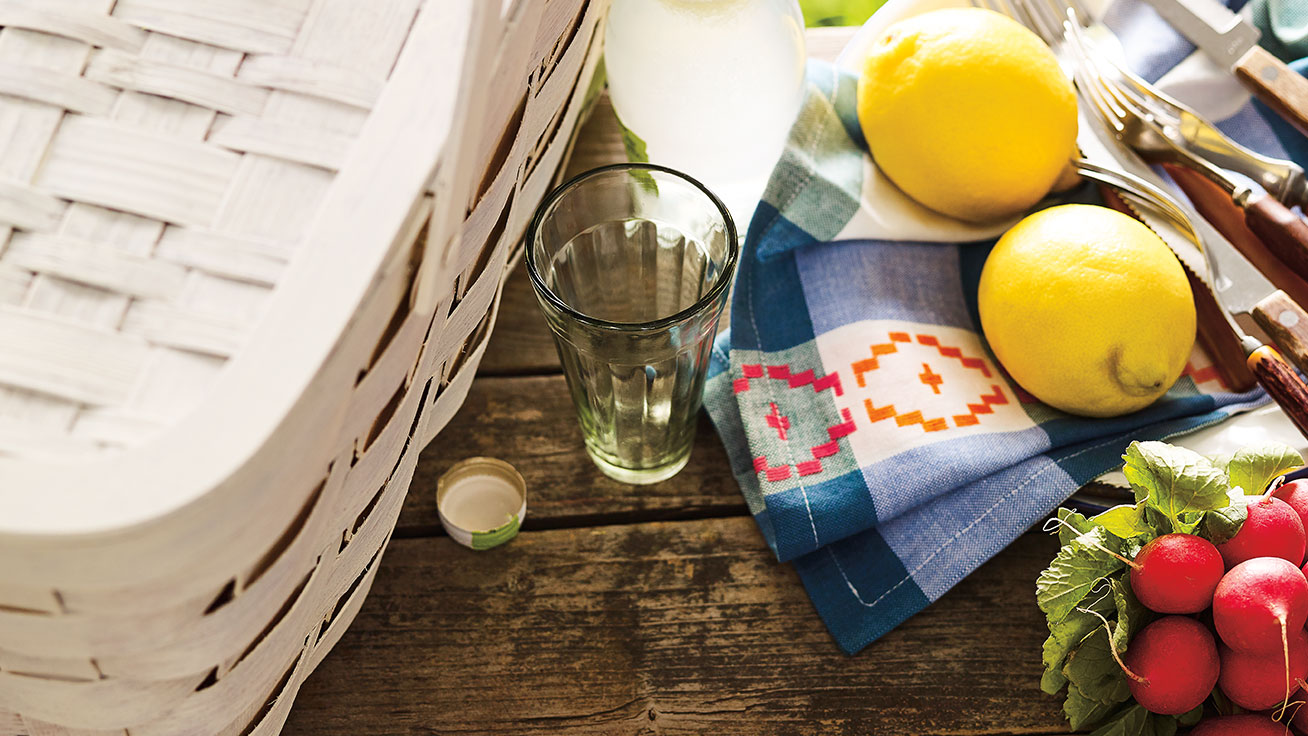During outdoor meals or picnics, hygiene conditions—combined with warm temperatures that promote the rapid growth of bacteria—are often far from ideal: Lack of proper refrigeration to keep food fresh, no access to clean water, undercooking meat on the grill, big group meals where food is left out in the hot sun for hours on end… But that doesn’t mean you can’t enjoy eating outside. Here are a few practical food safety tips.
› Before You Leave
Use Coolers
Wicker picnic baskets are lovely to look at but have no insulating properties, so use them for carrying tablecloths, cups, plates and utensils. Bacteria multiply rapidly at ambient temperatures, and even more so when the mercury rises above 30°C (86°F), so to keep perishable foods safe, be sure to transport them in coolers. If possible, you should have two: one for cold drinks—that’s opened and closed frequently—and another for perishables, which stays closed most of the time.
Pack Smart
Ideally, all food should be fully chilled before you place it in your cooler so that it stays that way longer. It’s also a good idea to stack your food in the cooler strategically: Warm air rises and cold descends so place meat, poultry and raw seafood at the bottom, well protected in sealed freezer bags or containers (to prevent these items from contaminating other types of food). Place the least perishable foods—like fruit and vegetables, or those that will be eaten first—at the top. (Check out our list of foods that don’t need to be refrigerated at ricardocuisine.com/summer-picnic-rules).

Don’t skimp on ice
The more ice you use, the better. And there are plenty of options out there: bags of ice, freezer bags filled with water and frozen flat, store-bought freezer packs or even frozen water bottles. And again, since warm air rises, place a layer of ice at the top of the cooler, over the last level of food. One more tip: It’s best to transport coolers in the car’s cabin—which is air-conditioned—rather than in the trunk.
Wash and carry
When unwashed fruit is cut, the bacteria naturally present on the rind or peel can be transferred to the flesh. After a few hours of exposure to the summer heat, bacteria levels can reach a point where they pose a health risk, so if you know there won’t be any drinking water at your picnic spot, be sure to wash all whole fruit (especially melons, whose low-acid flesh supports bacterial growth) before you leave. Then cut the fruit on-site, just before serving.
And don’t forget…
A large bucket, soap and hand towels. When you get to your picnic spot, fill the bucket with soapy water—this will serve as a hand-washing station. If there’s no drinking water available, gel sanitizer or disinfectant wipes will do the trick. Bring clean cutting boards and platters for serving food that you’ll be cooking on-site (this will prevent cross-contamination between raw ancooked food), as well as serving utensils (so that people don’t serve themselves with their hands). Also, a meat thermometer for checking internal temperature is extremely useful.
› At Your Picnic Site
Made in the shade
Protect your coolers from the sun by placing them in a shady spot, under a tree or picnic table. Take perishable foods out of the cooler just before cooking or serving them, and don’t let food sit out on the table for too long, even after it’s cooked.
Come clean
Hands are ideal breeding grounds for bacteria and they can easily contaminate food. Don’t forget to wash your hands before preparing your meal, and again before serving. Were your friends playing a little volleyball before arriving to eat? Place your bucket of soapy water and hand towels (or gel sanitizer) in plain view as a gentle reminder that everyone should wash their hands before diving into that platter of barbecued skewers or veggies and dip.
Don’t blame the mayo
When it comes to pointing fingers at what caused a case of food poisoning, mayonnaise is one of the usual suspects. Was potato salad on the menu? Then it must have been the mayo! But bacteria are not fond of mayonnaise: It’s too acidic to allow them to survive. Instead, it’s the non-acidic food that mayonnaise is combined with—like rice, pasta or potatoes—that makes it potentially dangerous. To reduce the risk of getting sick, acidify your dishes by adding extra lemon juice or vinegar. The more acidic the recipe is, the less chance bacteria will want to get in on the action.

Don’t Cross-contaminate
This is precisely what can happen if you put the sausages you’ve just finished grilling back into the same container they were in while uncooked—so use a clean platter or container for serving. Raw meat, poultry and seafood must never come in contact with ready-to-eat foods such as sandwiches, cold cuts, salads, fruit and crudités.
Take your temp
Cooking food properly is the best way to destroy bacteria. Use a thermometer to verify internal temperature, especially in the case of ground meat. Here are the minimum recommended temperatures:
- Meat (beef, pork, veal, lamb) 145°F (63°C)
- Fish and seafood 145°F (63°C)
- Pork or beef sausages 160°F (70°C)
- Ground beef, lamb and veal 160°F (70°C)
- Chicken, ground chicken and chicken sausages 165°F (74°C)
› Home Free
You can bring leftovers home, but only on two conditions: They were exposed to ambient temperatures for less than two hours, or less than one hour if the temperature was above 30°C (86°F), and the cooler still has enough ice to keep the food fully chilled for the ride back. Nobody likes waste, but no one likes to get sick either—when in doubt, throw it out!

